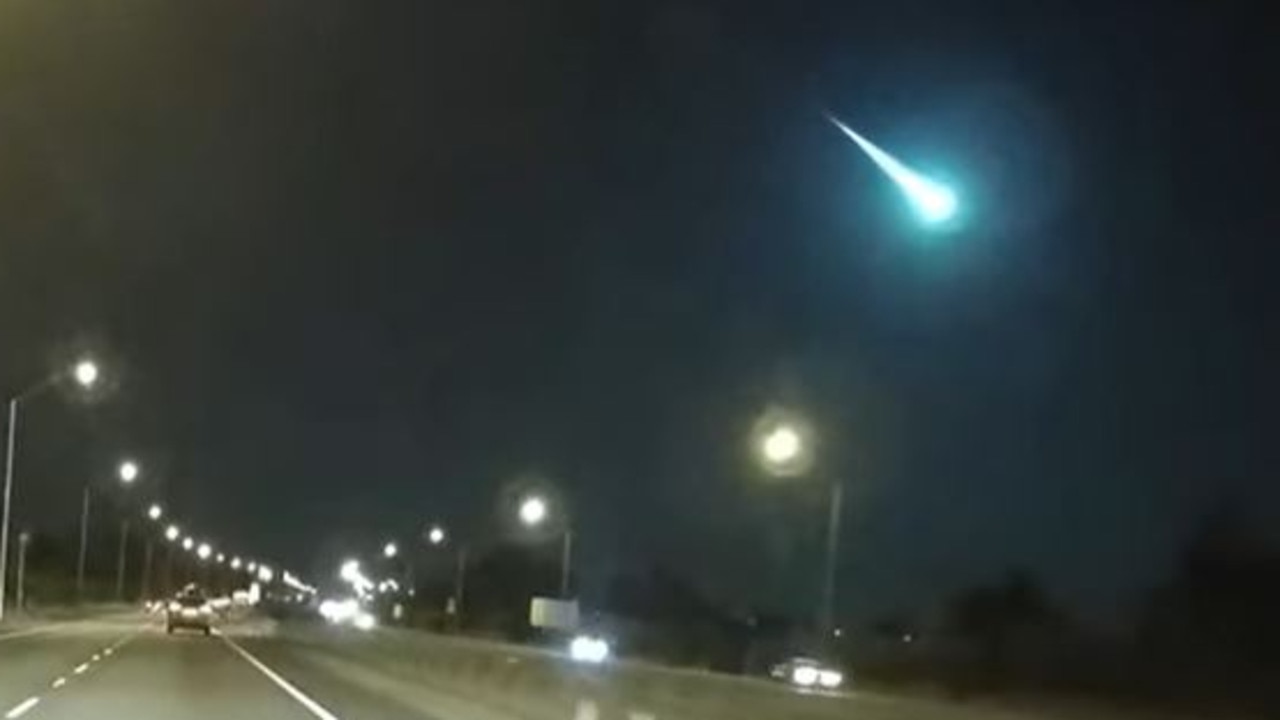Dashcam shows rare meteor shower surging through earth
A woman’s dashcam has captured an incredible sighting that only comes around every 76 years.
An incredibly rare natural wonder has been captured by the dashcam of a woman driving down an Australian highway late at night.
The driver was travelling down the highway in Baldivis, south of Perth, when a meteor came surging through earth’s atmosphere.
Her dashcam caught it in crystal clear colour, with the flying object shown shooting across the sky, flashing in bright blue before disappearing.
“Driving home and treated to a show and luckily captured on dashcam,” the woman wrote in a post to social media.
The event unfolded on Wednesday, just before 9pm.

Other locals claimed they saw the meteor too.
“This is amazing! I saw a green light out our theatre room window last night and had no clue what it was and now I know I’m not going mad,” one person wrote in a comment.
“It was amazing. Saw it travelling along Baldivis Road,” another said.
Someone else agreed it was “truly amazing”.
The Perth Observatory alerted the public in October about what was to come, revealing locals could look forward to about a month of the Orionids meteor shower.
It was caused by the earth flying through the debris leftover from Comet Halley’s tail, the observatory said.
Comet Halley is a short-period comet visible from earth every 75 to 79 years.
As the meteor shower was unfolding, it appeared to come from the Orion constellation – the shower’s namesake.

As the comet orbits the sun, over a period of about 76 years, it leaves a debris field full of dust, ice, and rocks that can be over 1,000 years old.
Every year beginning in October, the earth flies through the debris field, with dust, ice and rocks entering the atmosphere before burning up and causing big streaks of light, like the flash spotted by the driver in Perth.
The Orionids shower was set to send about 15 to 20 green or yellowish meteorites streaking through the atmosphere every hour between October 2 and November 7.
The peak unfolded over October 21 and 22, according to the conservatory.
The spectacle was best viewed between midnight and 4am, it added, encouraging locals to look directly east around midnight then towards the north as it gets closer to sunrise.






